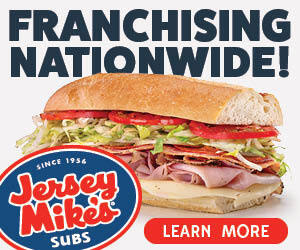New Country Entry
In our last article we explained how to perform a country ranking analysis. In a recently completed engagement, management indicated that a number of revolutionary learnings occurred as a result of our analysis and that those learnings have radically impacted the company's expansion plans.
In this article, we will discuss approaches to identifying unit potential; an analysis that forms the foundation for valuing the financial opportunity presented by each country. The purpose of performing a unit potential analysis is to develop a quantitative method for approximating unit potential for a particular country. Uses of the unit potential analysis include:
- Determining the overall potential of an international franchising effort;
- Determining unit potential for a particular country;
- Determining the financial strength required for a franchisee(s) to realize the unit potential of a country; and
- Determining how a new franchisee needs to scale their business to meet their growth objectives and the impact that growth will have on resource allocation.
Each of these learnings feed into the franchisor's evaluation of which countries present the best financial and strategic opportunities and what characteristics potential partners should possess in order to realize those opportunities.
In developing unit count projections across a number of countries, we employ the following six step approach.
- Historical Factors - a review of strategic, economic and other factors which have historically contributed to the number of units that can reasonably be placed in a market are identified is conducted;
- Saturation Rates - saturation rates for the type of business in which the franchisor is engaged are identified;
- Market Share - a market share target for the franchisor is developed;
- Projected Unit Count - an equation that quantifies unit potential based upon saturation rates, market share targets and other factors is developed;
- Testing - the unit potential equation is benchmarked against the franchisor's historical markets; and
- Results - the unit potential analysis is run for each country being evaluated.
Unit Potential
Step 1 - Historical Factors - The unit potential process begins by gaining an understanding of the historic factors that have contributed to the concept's successful unit growth. This process includes discussions with management and various domain experts inside and outside the franchisor's organization.
At the conclusion of this phase of the analysis, you should be able to clearly articulate three to five key factors of unit potential and concrete ways to measure them. For example, "market size" is often an important factor. The questions are:
- Who is your target market?
- How do you measure market size for your business?
- How many customers within the target market are required to support a unit?
- What is break even for an average unit?
- What level of sales is needed for an average unit to be profitable?
- What limitations, geographic or otherwise, exist on the unit's ability to draw customers?
Some of these questions will be answerable by management; others will require an independent analysis. In either case, the data that underlies the answer should be closely examined. We often find that management has a "sense" for these issues, but has never run the numbers to determine whether their "sense" is correct. It is ultimately the advisors responsibility to assure that management's sense is confirmed by the facts.
Step 2 - Saturation Rates - Using what you have learned in the first step, you are now ready to begin develop a method for determining the maximum number of units can profitably exist in a given geographic area ("saturation rate"). We have found that it is easier to examine the total potential for a market and adjust total market potential downward based upon what share of the market a franchisee should reasonably expect to garner, than to try to evaluate the franchisor's unit potential in one step. Reductions can also be made based on the specific competitive environment within a country, at a later time. A discussion of how to determine reasonable market share occurs later below.
In evaluating saturation rates, it is essential to identify more mature markets and determine when they approach saturation. This analysis includes working with the franchisor and industry resources to develop a saturation metric that can be applied to the countries being evaluated. In some industries accepted saturation metrics are known. For others, you will have to create a metric. Some saturation metrics will be population and spending power related, while others it will rely on other demand functions.
Once a saturation metric is developed it needs to be compared against the actual saturation rates for mature markets. These markets may be countries or statistical metropolitan areas within the U.S.
Step 3 - Market Share - Saturation rates although critical to any unit count equation, tell only part of the story. Total market potential, in units, must be reduced to reflect the percentage of the market that a franchisee can reasonably expect to capture. In other words, what share of the total market should the franchisor reasonably expect to obtain ("market share")?
Relevant data points that must be considered include the franchisor's market share in those markets where it has been developed to its full potential. This analysis must, in turn, be evaluated against historic market shares for market leaders in the franchisor's industry. In other words, the reasonableness of any market share hypothesis must be checked against reality for the brand and the industry.
Step 4 - Projected Unit Count - Once a saturation rate and target market share is identified, it is only a matter of using the saturation rate and target market share to calculate expected units. The calculation is a relatively straight forward one. The difficult part of creating the equation, identifying the saturation rate and target market share, has already been completed in steps 2 and 3.
As part of this step, a franchisor should consider whether there are other predictors of market potential. Based upon correlations between the franchisor and competitors, the industry or other industries it may be that there are other indicators that are as good or better predictors of unit count as the unit count equation. These correlations may come from expected or unexpected sources. For example, a strong correlation may exist between Quick Service Restaurants (QSR) and other types of restaurant concepts. Thus, knowing the number of QSR units in a given market may provide a meaningful measure of the potential for other types of restaurants.
If you are fortunate enough to find one of these predictors and international data is widely available, then there is a potential goldmine of information not only as it relates to unit counts, but to other areas as well (e.g. margins, investment costs etc.). Each case will differ, but maintaining an open mind and looking for otherwise unexpected predictors can mean the difference between "good results" and truly revolutionary ways of looking at the business.
Step 5 - Testing - Once the unit potential formula has been developed it should be tested against the business's historical markets to test its predictive powers. Remember the goal is to develop a way of estimating unit potential in markets that the franchisor has not yet entered. While this is never an exact science, it is possible to develop more predictive ways of estimating unit potential
Step 6 - Results - The final step is to run the analysis for all the countries being evaluated, and review the results. As in the country rank analysis, it is essential that management scrutinize the results. If anomalies cannot be explained, then the assumptions must be further scrutinized and alternative measures must be tested until the results are sound.
Conclusions
Developing ways to think about international market saturation and market share not only helps management understand market potential, but it often helps existing international franchisees to explore ways better manage the growth of their businesses. This means helping them grow aggressively, yet profitably.
While this analysis is helpful on a stand alone basis, its ultimate value is reflected as the franchisor builds its understanding of individual country's value. These values take into account a market's unit, the market's income statement, and the markets cost of capital. In our next article we will explore the process of arriving at country valuations and how those valuations are used to price international franchise rights.
Share this Feature
Recommended Reading:
FRANCHISE TOPICS
- Multi-Unit Franchising
- Get Started in Franchising
- Franchise Growth
- Franchise Operations
- Open New Units
- Franchise Leadership
- Franchise Marketing
- Technology
- Franchise Law
- Franchise Awards
- Franchise Rankings
- Franchise Trends
- Franchise Development
- Featured Franchise Stories
FEATURED IN

Franchise Update Magazine: Issue 4, 2004








 The franchise listed above are not related to or endorsed by Franchise Update or Franchise Update Media Group. We are not engaged in, supporting, or endorsing any specific franchise, business opportunity, company or individual. No statement in this site is to be construed as a recommendation. We encourage prospective franchise buyers to perform extensive due diligence when considering a franchise opportunity.
The franchise listed above are not related to or endorsed by Franchise Update or Franchise Update Media Group. We are not engaged in, supporting, or endorsing any specific franchise, business opportunity, company or individual. No statement in this site is to be construed as a recommendation. We encourage prospective franchise buyers to perform extensive due diligence when considering a franchise opportunity.